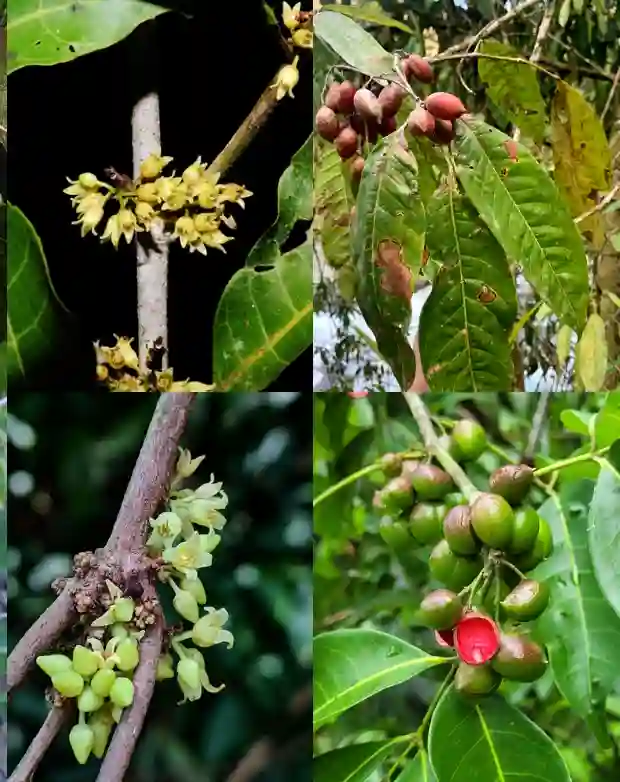
FAQs About Asarum Splendens
As a passionate plant enthusiast, I’ve found myself drawn to many unique species, but none quite capture my interest like Asarum Splendens. This charming perennial, often known as Chinese Wild Ginger, has piqued the curiosity of many fellow gardeners. In this article, I’ll tackle some frequently asked questions about Asarum Splendens, sharing my experiences and insights.
134 Species in Genus Asarum
What is Asarum Splendens?
Asarum Splendens is a fascinating herbaceous perennial native to the forests of East Asia. It’s part of the Aristolochiaceae family, which includes a variety of other interesting plants. The leaves of Asarum Splendens are heart-shaped, glossy, and can grow up to 12 inches long, creating a lush, green ground cover. The plant produces small, cup-shaped flowers that are typically dark purple and bloom in spring. Though these flowers can be subtle, they add a unique beauty to shaded garden areas.
How to Care for Asarum Splendens?
Caring for Asarum Splendens is relatively straightforward, making it a great choice for both novice and experienced gardeners. Here are some key care tips based on my experiences:
- Light Requirements: Asarum Splendens thrives in partial to full shade. Direct sunlight can scorch the leaves, so I always ensure it’s planted in a shaded spot.
- Soil Conditions: This plant prefers well-drained, moist soil rich in organic matter. I’ve found that adding compost helps improve soil fertility and drainage, creating an ideal environment for growth.
- Watering: Regular watering is essential, especially during dry spells. I aim to keep the soil consistently moist but not waterlogged. Mulching around the base helps retain moisture.
- Fertilization: I apply a balanced, slow-release fertilizer in early spring to promote healthy growth. Over-fertilizing can harm the plant, so I tend to err on the side of caution.
How to Propagate Asarum Splendens?
Propagating Asarum Splendens can be done through division, which is my preferred method. Here’s how I go about it:
- Timing: The best time to divide Asarum Splendens is in early spring or fall when the plant is not actively growing.
- Division: Carefully dig up the root clumps, ensuring you don’t damage the roots. Using a sharp spade, divide the clumps into smaller sections, each with at least one healthy shoot.
- Replanting: Replant the divisions immediately in well-prepared soil. Water them well to help them settle in.
What to Plant With Asarum Splendens?
Asarum Splendens pairs wonderfully with other shade-loving plants. In my garden, I’ve found great companions include:
- Ferns: Their delicate fronds create a beautiful contrast with the bold leaves of Asarum Splendens.
- Hostas: These hardy perennials offer an array of leaf colors and textures, enhancing the visual appeal of the garden.
- Astilbe: The feathery plumes of Astilbe bloom beautifully alongside the glossy leaves of Asarum, adding a splash of color.
Is Asarum Splendens Toxic?
One of the common questions I encounter is about the toxicity of Asarum Splendens. While it’s not highly toxic, it’s important to note that the plant contains compounds that can be irritating if ingested. I always recommend keeping it away from pets and small children.
Benefits of Growing Asarum Splendens
Beyond its ornamental appeal, Asarum Splendens offers several benefits:
- Ground Cover: It effectively suppresses weeds, making it an excellent choice for shaded areas where grass struggles to grow.
- Wildlife Habitat: The plant attracts various pollinators, enhancing biodiversity in my garden.
- Medicinal Uses: Traditionally, Asarum Splendens has been used in herbal medicine, though it’s essential to consult with a healthcare professional before using any plant for medicinal purposes.
Common Problems with Asarum Splendens
While Asarum Splendens is generally low-maintenance, it can face a few common issues:
- Root Rot: Overwatering can lead to root rot. I’ve learned to check the soil moisture before watering to prevent this.
- Pests: Occasionally, slugs and snails can be a nuisance. I use organic methods, like handpicking or setting up traps, to manage these pests.
Comparing Asarum Splendens with Similar Plants
People often confuse Asarum Splendens with other ground covers like Pachysandra and Vinca Minor. Here’s how they compare:
- Asarum Splendens vs. Pachysandra: While both thrive in shade, Asarum Splendens has a more vibrant foliage and unique flowers. Pachysandra tends to spread faster but lacks the ornamental flowers.
- Asarum Splendens vs. Vinca Minor: Vinca is more aggressive in spreading and has blue flowers, while Asarum Splendens offers a more subtle, elegant look with its dark blooms.
Conclusion
Asarum Splendens has earned its place in my garden due to its unique charm and ease of care. Whether you’re looking to enhance your shaded areas or explore its potential medicinal uses, this plant is worth considering. I hope this guide answers some of your questions and inspires you to give Asarum Splendens a try in your own garden!
If i die, water my plants!



